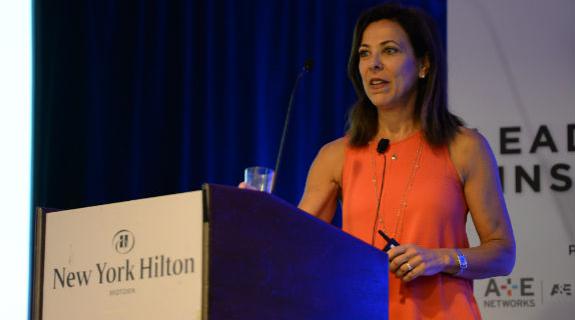For the first time ever, five generations – from Generation Z to millennials to traditionalists—are working together and this dynamic creates both pros and cons for the workplace.
The key to managing these generation gaps, said Jocelyn Greenky Herz, office culture and politics expert, at PromaxBDA: The Conference 2016 in New York on Tuesday, is communication and empathy.
The youngest group, who certainly aren’t present in all workplaces, are Generation Z, measuring about 23 million. This group is considered the latest “me” generation, and the age of the smart phone has turned them into the smartest people with the world’s shortest attention spans. They can be overly serious for their age, considering they haven’t known a world before 9/11, and they appreciate fun and humor.
The much-discussed millennials are the largest of these groups, at 75.4 million people strong. Millennials include new immigrants, making them very culturally tolerant as a demographic. Obviously not all millennials are alike, but from a marketing perspective, this group is ambitious, optimistic, patriotic and impatient. They like to receive feedback, as long as it’s positive, and they need to feel like they are part of a community.
A much smaller and more cynical group are the Gen Xers, at about 50 million. This group tends to be suspicious of organizations and thrives on autonomy. They tend to give their loyalty to a person, not a company.
Baby boomers, born between 1946 and 1964, are still a huge part of the workforce at 75 million strong. Boomers are more rules-oriented than Gen Xers, but as leaders, they are also often willing to break rules to get where they want to go. They have a strong work ethic, and feel that’s measured by hours worked.
Finally, traditionalists, born before 1946, are still working in force, with 55 million in the workplace. This is the group with the best interpersonal skills, having spent most of their careers without email and mobile devices. Having grown up in the shadow of the Great Depression and World War II, they tend to be conservative, striving for financial security and living by the credo “waste not, want not.”
When leading a workplace that includes all of these groups, communication problems can arise, and those problems can seriously impact productivity, said Greenky Herz.
“It’s common to underestimate the value of each generation,” she said. “Wasting time solving the wrong problems will cost you time, money, morale.”
To keep those problems in check, Herz advocated several strategies:
—Work with each group to find common ground, encouraging multi-generational mentorships and intercompany events in which everyone can mingle and get to know each other.
—During meetings, ask employees to put away their devices.
—Expect accountability. “Encourage your teams to own their results,” Greenky Herz said. “It won’t matter what age, what culture someone comes from. Having them own up to their results based on best practices is important.”
—Probably the most important piece of advice Greenky offered: “A single toxic person costs you more than they can deliver,” Greenky Herz said.
—Stop hiring one type of person and be aware of your own bias in order to stop making that mistake. If you are constantly hiring millennials to get their fresh perspectives, but then finding yourself disappointed when they leave the company after six months to travel Europe or go on a vision quest to Costa Rica, try hiring different sorts of people from different age groups to reap the benefit of their experience and stability.
Says Greenky Herz: “Diversity will make you more powerful, stronger. Not hiring just one kind of person will give you a lot of breadth and enable you to move yourself, your team and your company forward.”
Tags:












































__twocolumncontent.jpg)











